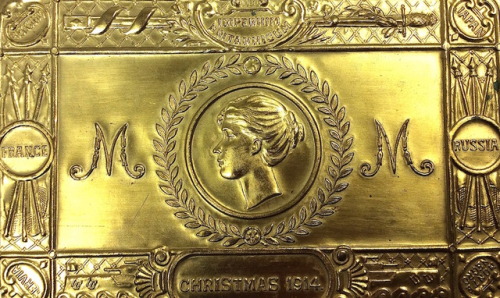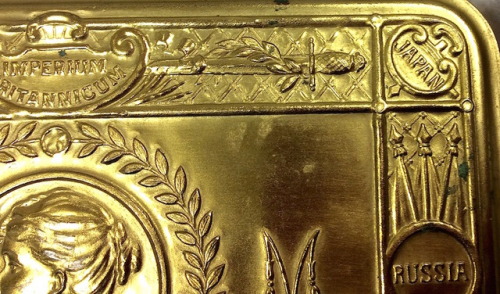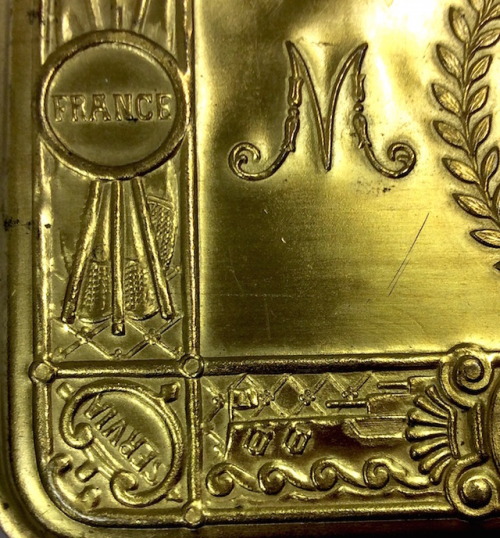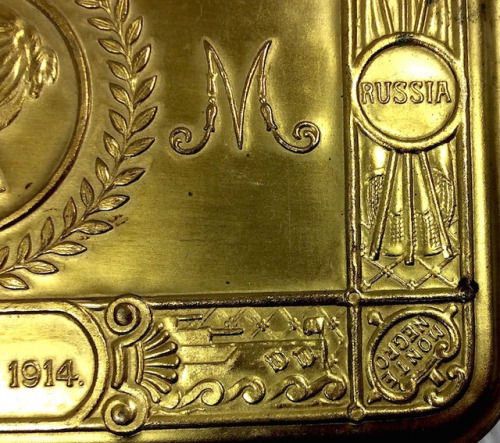#dreadnnought
Highlanders’ Museum (Queen’s Own Highlanders Collection) / The Princess Mary 1914 Christmas Gift
The design depicts the head of Princess Mary in the centre, a laurel wreath surrounds her and she is flanked by the ‘M’ monogram. A decorative cartouche contains the words “Imperium Britannicum” at the top with a sword, bayonet and scabbard (for the Army) either side. On the lower edge, another cartouche contains the words “Christmas 1914”, which is flanked by the bows of two Dreadnnoughts (for the Royal Navy) forging through deep seas.
The corners display the names of the Allies: Belgium, Japan, Montenegro and Servia; France and Russia at the edges, each superimposed on their furled flags or standards.
The Princess Mary’s Christmas Gift Fund was launched on October 14th 1914, with subsequent advertisements placed in the national press inviting monetary contributions to a “Sailors and Soldiers Christmas Fund”. Created by the 17 year old Princess Mary, daughter of King George V and Queen Mary, its purpose was to provide everyone on Active Service on Christmas Day with a “gift from the nation”.
Her public letter released by Buckingham Palace read:
“I have delayed making known a wish that has long been in my heart for fear of encroaching on other funds, the claims of which have been more urgent. I want you now to help me to send a Christmas present from the whole nation to every sailor afloat and every soldier at the Front. On Christmas Eve when, like the shepherds of old, they keep their watch, doubtless their thoughts will turn to home…I am sure that we should all be the happier to feel that we had helped to send our little token of love and sympathy…something that would be useful and of permanent value and the making of which may be the means of employment in trades adversely affected by the war”.
Every box contained a Christmas card and a picture of the Princess. Huge demands were made upon the already stretched postal service at the time yet more than 355,000 were delivered by the yuletide deadline. New Year deliveries contained a card that wished a ‘victorious new year’.
Parents of soldiers killed were entitled to boxes alongside nurses and the wounded. Prisoners of war at the time had theirs reserved until they were repatriated.
A shortage of brass also effected dispatch times and lead to many entitled personnel not receiving their gift until as late as the summer of 1916, and by January 1919 considerable numbers had still not been distributed.
When the fund finally closed almost £200,000 had been donated with more than two and a half million boxes with contents delivered by 1920.
There are a number of gift boxes held within the archive at the museum.
To find out more: http://www.iwm.org.uk/history/first-world-war-princess-mary-gift-box
Post link







